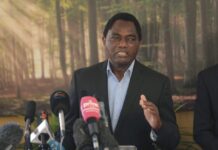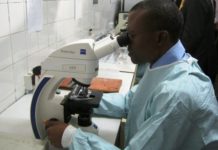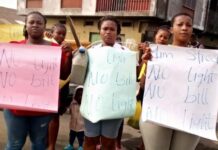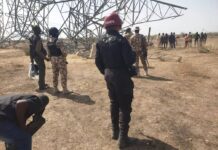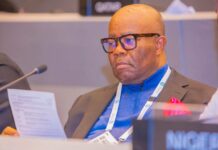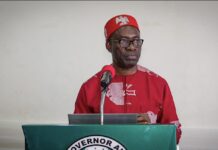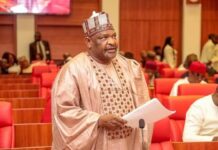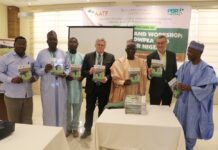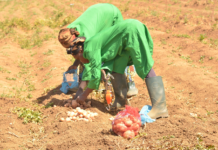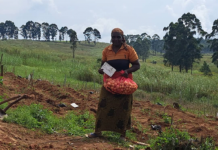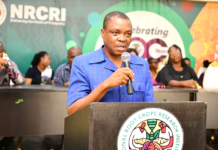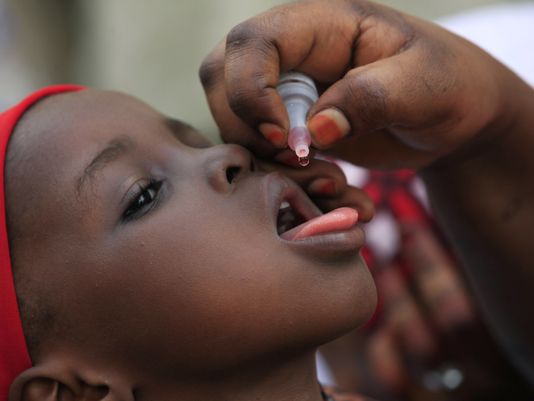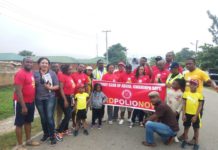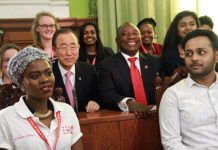Just four years ago, in 2012, Nigeria accounted for more than half of all polio cases worldwide, but the country has made significant strides in recent years, going two years without a single case. The public health world woke up to the sad news of confirmation of two new cases of polio in Nigeria. The cases of Wild Polio Virus were recorded in Gwoza and Jere Local Government Areas of Borno State as confirmed by the Federal Ministry of Health and the World Health Organisation (WHO).
This confirmation came as a strange shock to the public health experts, while other stake holders have described this resurgence as “embarrassing”, “a setback”, “bad news”, “devastating”, “sobering” and countless other description of the events. Many of these descriptions tells the story of the effect of this findings on the whole polio eradication initiative, it connotes the fact Nigeria’s hope of being certified polio-free by July 2017 may be unachievable.
The two cases were discovered in parts of Borno that have recently become accessible, but large areas of the state remain unreachable. Nigeria – and the continent – had its last confirmed polio case two years ago and was within a year of being certified polio-free, thanks to a massive mobilisation by the government, partners and local health providers…
To a keen expert, the development may not be so surprising, or shocking. We would vividly recall that some parts of the country have been largely inaccessible but do the activities of insurgents; the health care systems were largely non functional, vaccines were not reaching the conflict areas, women and children were trapped in these areas, procreation was still going on and children were not getting the routine vaccines. Even though relentless efforts were made by government agencies as led by the NPHCDA and other committed partners in getting polio vaccines to the conflict areas, this may have missed a constantly mobile population whose major task is to move from place to place hiding and running from the insurgents. Attempts were made to cover the conflict zones via “fire walling the areas”, using “hit and run” strategy” and other strategies.
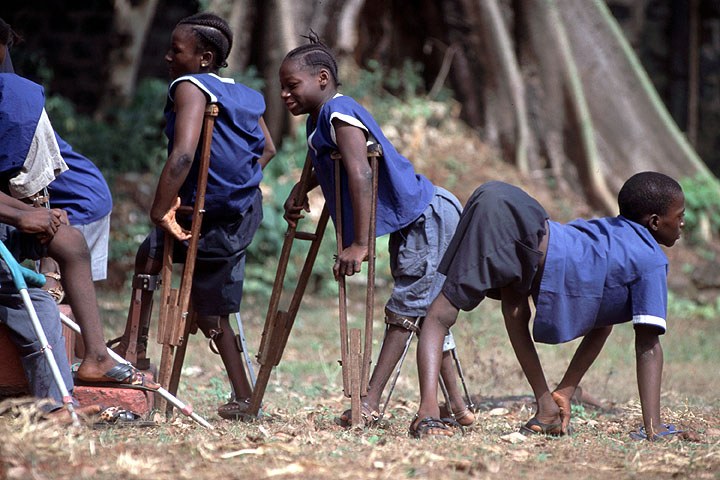
Some experts are of the opinion that for about three years, vaccinators have not had regular access to children in the areas. It has been reported that only 15 per cent of Gwoza community has been accessible to vaccinators in a very long time. While, experts the global community are mapping out and implementing strategies to control this outbreak, another new case of wild poliovirus type 1 (WPV1) was reported in the past week, from Monguno Local Government Area (LGA), Borno state. With this most recent case in country, the total number of WPV1 cases for 2016 is now three.
The situation is not all gloomy as it goes to highlight the effectiveness of our surveillance system. Detection of new cases at this point is not unexpected or unusual, particularly as surveillance is being strengthened (including by conducting retrospective acute flaccid paralysis case searches). Thus, the fact that our surveillance system could make this identification indicates that we are certainly ready for greater challenges of outbreak investigation and control.
As a full case investigation of all cases is ongoing, the third case is a two-year-old boy who had onset of paralysis on 6 August and was detected in an accessible Internally-Displaced Persons camp in Monguno LGA. The child’s family had originally arrived from Marte LGA (as had the family of the case from Jere LGA reported in August).
This viral infection has the propensity to spread to many states in the region, if control measures are not put in place. The latest case is closely linked to the two cases recorded in Borno state in August. Preliminary findings reveal that the three cases are may be of the same strain of the disease circulating in the North East for years. Further analysis using genetic sequencing of the isolated viruses suggests they are most closely linked to WPV1 last detected in Borno in 2011, this is a pointer to the possibility of that the strain has been circulating without detection for 5 years.
The disappointment of this sudden “setback” maybe due to the fact that the last case recorded in Nigeria was recorded 2 years ago and it is just, a year before the country was to be certified polio-free. Before this reemergence, Nigeria had not reported a polio case since July 24, 2014. Barring the new cases, Nigeria was on track to be declared polio free on July 24, 2017. A country must not have any case for at least three years to be declared polio-free
These new cases of polio in Nigeria underline the prevailing risks children encountered in conflict zones. One can therefore imagine the health challenges of women and children in the region. Children are already facing dangerously high levels of malnutrition and other communicable diseases in the IDP camps and communities.”
The discovery and confirmation of the outbreak was as a result of strengthened surveillance due to improved accessibility which has been made possible by the recent military action in liberating more communities in the North-eastern part of the country.
This new cases should not deter the progress made so far in the polio eradication initiative. This progress has been as a result of concerted efforts by all level of government, civil society, traditional and religious leaders, and international partners as well as dedicated health workers.
Prevention and control
The direct and indirect relationship between health and socioeconomic, socio-political matters is being brought to the fore as the nation strategizes to combat polio and other diseases. Thus, we cannot deny the connection between conflict and the continued threat of polio. The two new cases mean children across the Lake Chad region are now at particular risk. The current focus is to shield communities within and surrounding this area and continue until every child has been immunised with polio vaccine.
To the immediately contain this outbreak, the Federal Ministry of Health of Nigeria, supported by the WHO, UNICEF, and partners of the Global Polio Eradication Initiative, immediately implements an emergency immunisation campaign, starting in the accessible parts of Borno state. The campaigns should involve the surrounding states of Yobe, Adamawa and Gombe.
The victorious Military should play a front line role in this targeted campaign. Every soldier in the North East frontline should be trained in administering the Oral Polio vaccine and should have the capacity to ensure potent vaccines get the children within the age limits. This “Vaccine and Gun” approach should be a long term strategy. Vaccines should be available at Military Check points. The NPHCDA/FMOH should partner with the Nigerian Armed Forces to make this possible. The battle must be won on two fronts, “victory over insurgency” and “victory over polio” and communicable disease. It is not enough to escort vaccinators; the Military can administer the vaccines as well.
The Federal Government should sustain and improve on Polio and Routine Immunisation in Nigeria. Working with partners to strengthen routine immunisation infrastructure; develop a robust surveillance system; designate high quality immunisation days. This will help to rapidly boost immunity in the affected areas to ensure that no more children are affected by the disease.
There should be sustained partnerships and community participation in all immunisation activities, especially involving community gate keepers and leaders.
In this situation, the Federal Ministry of Health through the National Primary Healthcare Development Agency (NPHCDA) with the support of partners including WHO and UNICEF will conduct a detailed risk analysis to clearly determine the extent of circulation of the virus, and to assess overall levels of population immunity in order to guide the ongoing response.
He further called on other states and local governments to redouble their efforts by safeguarding their territories from importation of the virus by providing the required leadership and ensuring accountability among healthcare workers and other stakeholders.
Conclusion
Globally, the world is gradually getting close to reaching the goal of polio eradication. Only 21 wild polio cases have been reported so far in 2016, compared to 34 cases at the same point last year. Not until now, only two countries are reporting polio: Pakistan and Afghanistan. Four out of the 6 WHO Regions of the world have been certified polio-free, and only one of the three types of wild poliovirus is still circulating in the world (type 1).
Nigeria and the continent had its last confirmed polio case two years ago and was within a year of being certified polio-free, thanks to a massive mobilization by the government, partners and local health providers.
The 3 cases of Polio in Nigeria particularly highlight the need to prioritize immunization of children in conflict areas, hard-to-reach areas such as the Lake Chad region, which spans several countries. These areas are affected by conflict and large population movements. Thus, the Military has a role to directly support vaccination by vaccinating children as they emancipate communities via the “Gun and Vaccine” approach. It will be of no use if children are freed from insurgents and yet die or are disabled due to polio.
Reaching children in this region requires vaccinating populations as they move in and out of inaccessible areas and using local-level groups and organizations, such as religious institutions and community based organizations, to negotiate access for vaccination teams.
The surveillance system has improved with more access as granted Military liberation of the area. The reminder that the country needs to remain vigilant and immunise all eligible children with polio vaccine until polio is completely eradicated worldwide.
Kingsley Okafor is a Community Health Physician and expert in Public Health and Health, policy management. He is also the contributing editor for citizentv.ng

